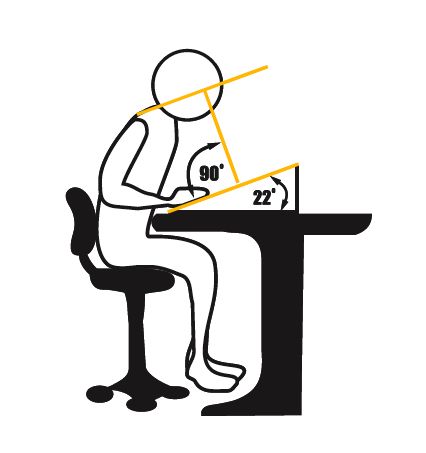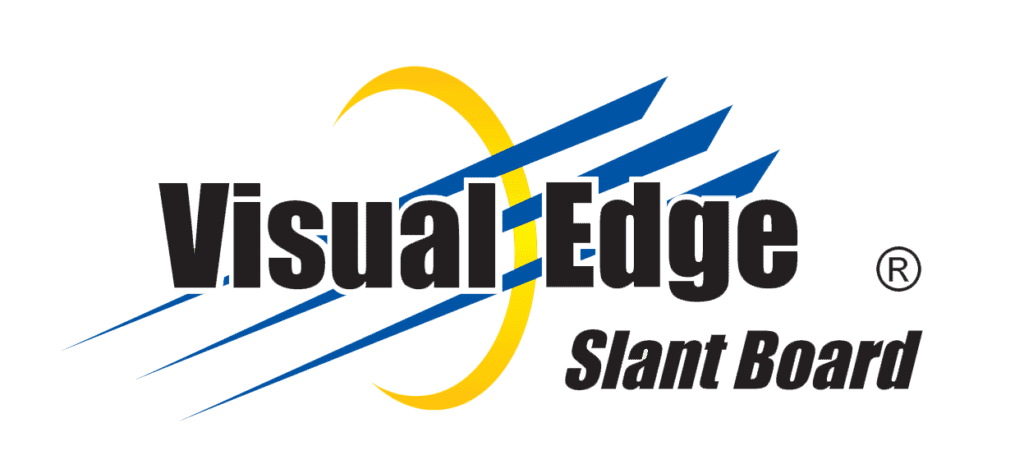Vision Processing
How to Reduce Reading Stress for Better Learning
Lets Reduce Your Reading Stress
Because there is an intimate relationship between posture, working distance, desk surface the pioneering experiments by Dr. Darrel Boyd Harmon and subsequent research by Drs. John Pierce and Steven Greenspan clearly prove a reduction of stress and improved performance when conditions are arranged properly for near‐point visual activities such as reading and writing. The following changes were observed: reduced heart rate, more regular and deeper breathing, and reduced neck muscle and overall body tension.
How to achieve the benefits you need:
Sloped Working Surface
A sloping working surface must be used that is tilted between 20 and 23 degrees from the horizontal. The Visual Edge Slant Board is at 22 degrees, which has been found to be the optimum angle.
Improved Posture
Seated comfortably, relatively erect, feet flat on floor or box.
Working Distance
The “Harmon Distance” is the optimal distance from the eyes to the working surface. It is the distance from the elbow to the first knuckle. This can only be assured with a proper chair height to desk relationship.
Near point Lenses
Only if prescribed by a developmental Optemogist. A specific, low power prescription not used to correct a defect in the eyes but to put the eyes into better balance for near tasks. This enhances and integrates the posture, working distance, and surface relationship
Reading should be an enjoyable and relaxing experience. By reducing reading stress it allows you to not only feel physically better but also make learning easier.

Instructions for Visual Hygiene
- Ensure your reading material is at an angle of between 20 and 23 degrees. The Visual Edge Slant Board is at an angle of 22 degree which research has shown to be the optimum angle at which to read.
- Do all near point activity at HARMON distance or slightly further. This is the distance from the center of the middle knuckle to the center of the elbow measured on the outside of the arm. Working at the Harmon distance reduces near point visual stress.
- Be AWARE of space between self and the page when reading. Also, be aware of things around and beyond the book.
- When reading, occasionally look off at a specific distant object and LET its details come into focus. Maintain awareness of other objects and details surrounding it. Do this at least at the end of each page.
- When studying, place a bookmark 3 or 4 pages ahead. Get up and move around for at least one minute each time you reach the bookmark.
- Sit UPRIGHT. Practice holding your back arched while you read and write. Avoid reading while lying on your stomach on the floor. Avoid reading in bed while lying on your stomach on the floor. Avoid reading in bed, unless sitting reasonably upright.
- Provide for adequate general illumination, as well as good central illumination, at the near task. The illumination on the task should be about three times that of the surrounding background. Avoid the use of florescent lighting.
- Do not sit any closer to TV than 6 to 8 feet, and be sure to sit upright. Maintain good posture.
- When riding in a vehicle, avoid reading and other near activity. Encourage looking at sights in the distance for interest and identification.
- Encourage outdoor play or sports activities that require seeing beyond arm’s length.
- When outdoors, sight a distant object at about eye level. At the same time, be aware of where things are on all sides.
- Walk with head up, eyes wide open and look TOWARD, not at, objects.
- Become very conscious of the background of the objects you look TOWARD, be it a person, print on a page, an electric sign, the TV, or any other object.

